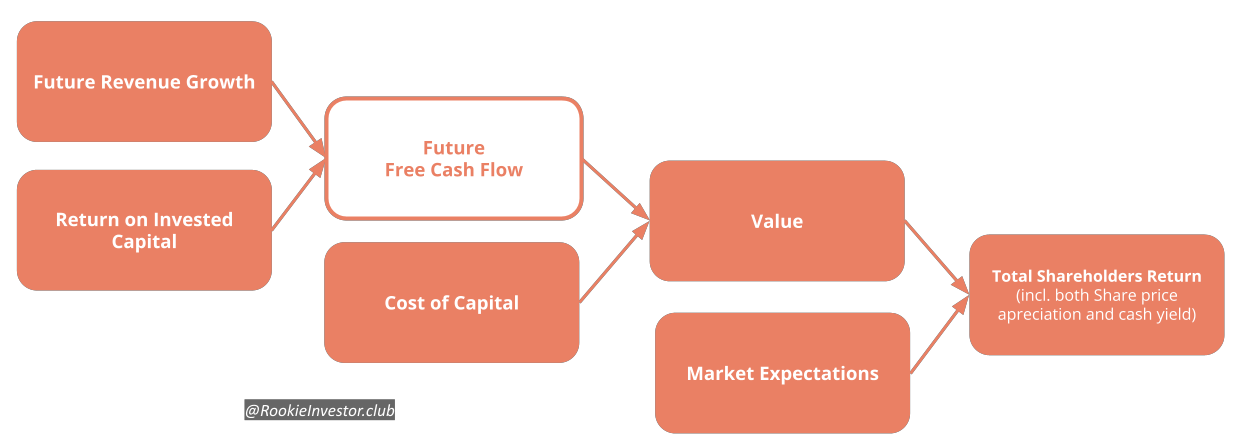A simple valuation score

I built a "valuation rank", which gives
- 1 point to companies with an FCF (Free Cash Flow) implied growth equal or less than the analyst forecast
- -1 point if this FCF implied growth is 10 percentage points higher than the actual forecast.
- 0.5 point if the past FCF average growth is 5 pp higher than the implied growth
- -0.5 point if the past FCF average growth is 10 pp lower than the implied growth.
These ranges give me a kind of "safety margin". Every company with a forecast and cash flow positive can fare anything between -1.5 and +1.5. I published this experimental score for my watchlist here.

Automating valuation
Automating valuation helps flag both positive and negative outliers, but should not be taken as the holy truth without doing your manual homework. I automated it by bulk importing the Free Cash Flow forecast for the next 5 years made by analysts (from Finbox), then comparing it to how much it would need to grow FCF to justify its current price to Free Cash Flow (the equivalent of P/E ratio but with FCF instead of Earnings). It allows for this kind of visualization.
How to calculate the implied Free Cash Flow growth? I do it with this formula. It assumes a discount rate (or cost of capital) of 10%, which is more conservative than any industry average. It also assumes that the Price to Free Cash Flow will be back at the market average of 15, five years from now. This is too conservative for many companies, but as I said, it is more about flagging outliers than trying to be exact. I also compare the past FCF growth rate with the implied one. As you probably noticed, this method is useless for you companies without positive free cash flow.
Implied Growth Formula
You can find my formula here in a spreadsheet format.
Implied FCF growth = ((Price * (1+ discount rate )^5 years) / (Price / Today´s Price to FCF) * expected future Price to Free Casg Flow))^(1/5 years)-1
I use 10% as the discount rate and 15 as the expected future P/FCF
To read my complete valuation post click here.